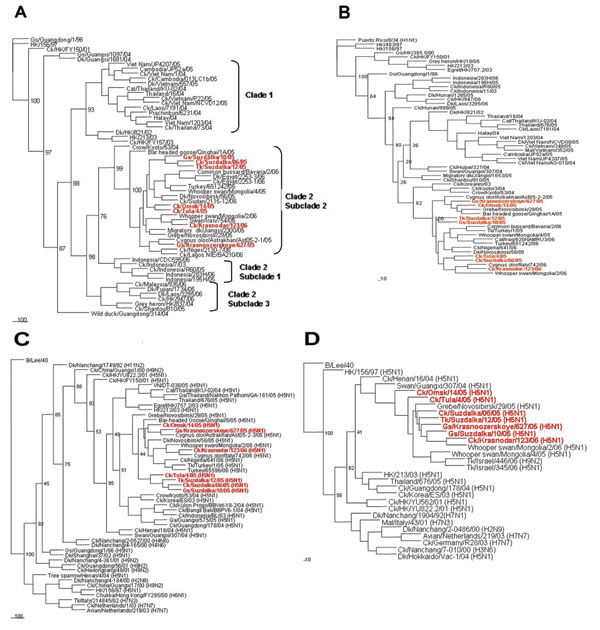Volume 13, Number 4—April 2007
Research
Influenza (H5N1) Viruses in Poultry, Russian Federation, 2005–2006
Figure 2

Figure 2. Phylogenetic relationships of the hemagglutinin (HA) (A), neuraminidase (NA) (B), polymerase basic protein 2 (PB2) (C), and nonstructural (NS) (D) genes of the 7 influenza (H5N1) viruses. Nucleotide sequences were analyzed by using the neighbor-joining method with 100 bootstraps. The HA phylogenetic tree was rooted to the HA gene of A/goose/Guangdong/1/96 (H5N1) virus. The NA phylogenetic tree was rooted to the NA gene of Puerto Rico/8/34 (H1N1) virus. The PB2 and NS trees were rooted to the PB2 and NS genes of B/Lee/40 virus.
1These authors contributed equally to this work.
2Current affiliation: US Department of Agriculture, Athens, Georgia, USA
Page created: June 28, 2010
Page updated: June 28, 2010
Page reviewed: June 28, 2010
The conclusions, findings, and opinions expressed by authors contributing to this journal do not necessarily reflect the official position of the U.S. Department of Health and Human Services, the Public Health Service, the Centers for Disease Control and Prevention, or the authors' affiliated institutions. Use of trade names is for identification only and does not imply endorsement by any of the groups named above.